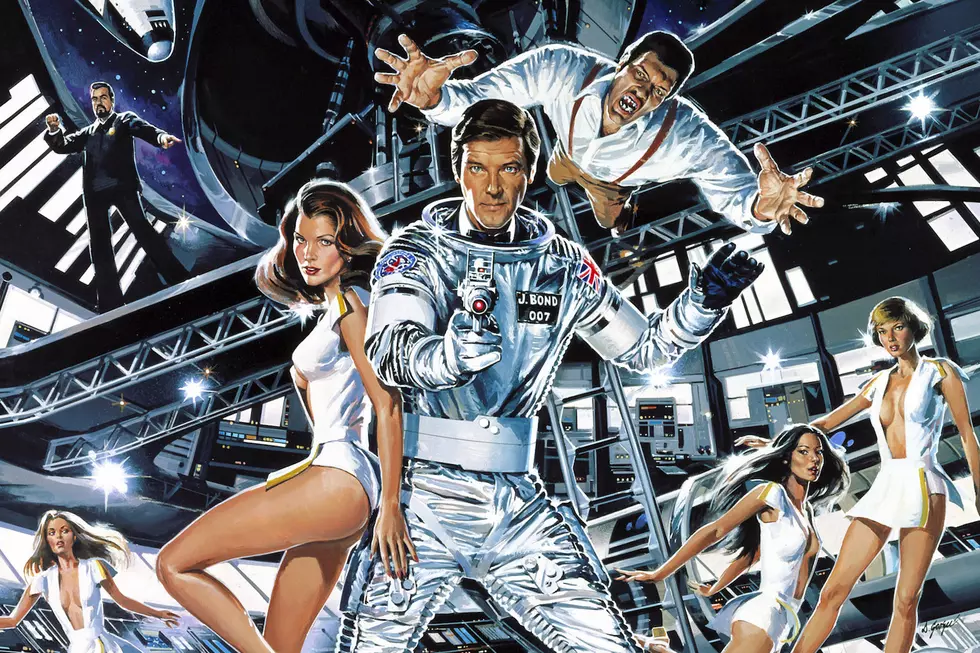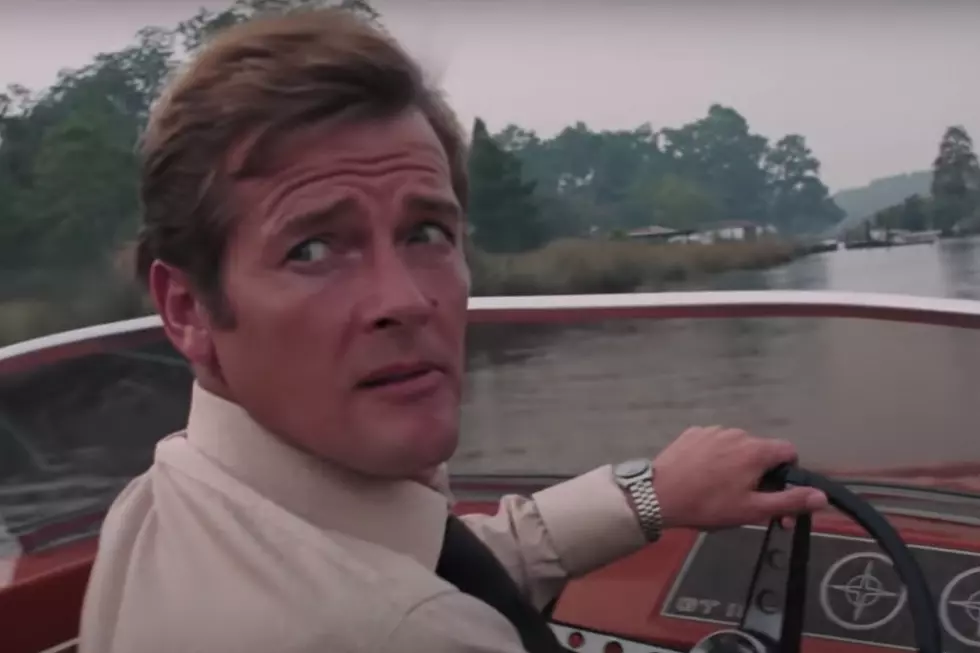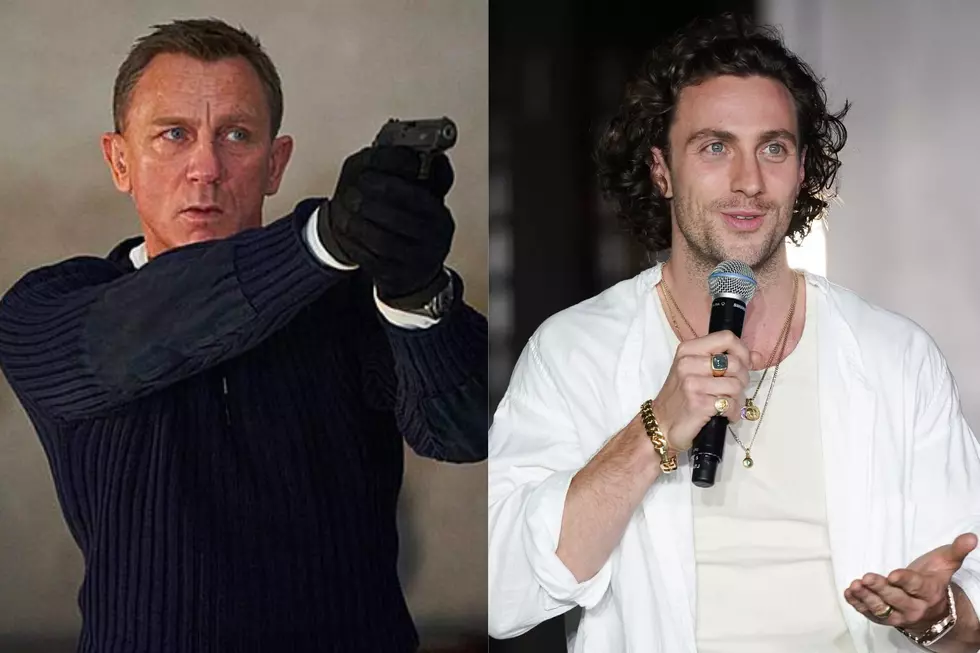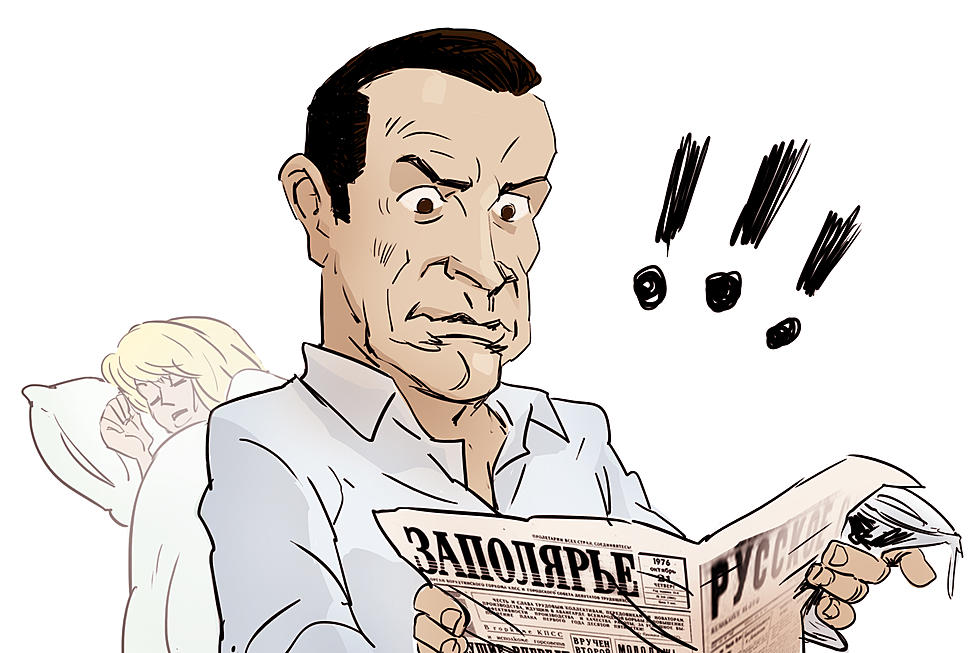
How James Bond’s ‘Moonraker’ Confirmed an Unlikely Friendship
A certain standard was set over the first 11 outings in the James Bond franchise, even if the character himself had already been portrayed by three different actors.
There would be a big brassy theme song. A few familiar names would often occupy the director's chair. M would oversee the suave secret agent's mission, which ultimately became a technology-aided adventure where the bad guy was dispatched.
"It's sort of like a bedtime story," the late Bond actor Roger Moore told Associated Press in 2012. "As long as you don't go too far away from the original, the child is happy. The audience gets what it's expecting: beautiful girls, actions, gadgets — there's a formula."
That is, until Moonraker arrived on June 26, 1979. Sure, Shirley Bassey was back for her third crack at a title song, as was director Lewis Gilbert (who'd already helmed 1967's You Only Live Twice and 1977's The Spy Who Loved Me) and Bernard Lee as M, Bond's superior at MI6. But Moonraker took substantial risks, both with plot and casting, in an attempt to stay relevant in a post-Star Wars movie landscape.
Would James Bond work in space? Moonraker aimed to find out, with famously uneven results. What the film succeeded in doing, however, is cementing one of the silver screen's most unlikely friendships between Moore and Richard Kiel, who made a surprising return as the hulking henchman Jaws.
He'd been narrowly saved in The Spy Who Loved Me, based largely on audience reaction. Test groups liked Kiel's character so much that the filmmakers couldn't bear the idea of making him a shark's meal inside villain Karl Stromberg's underwater lair.
"They shot two endings: one where the shark got him and the other one where he got the shark," Moore told Yahoo! in 2014. "They wanted him to see the film with an ordinary audience. And in America, there was great whooping and hollering when his head came up out of the sea – and I think there was that reaction everywhere. He was the villain everyone wanted to see return."
Now, producers would have to figure out a way to develop the silent, metal-mouthed menace's character over a second movie. But only after an opening scene of dizzying thrills, as Jaws flings an un-parachuted Bond out of an airplane. The sequence required nearly 90 jumps over five weeks, since they could film around only two minutes of free-fall action at a time before the actors had to open their chutes.
Watch James Bond's Battle for a Parachute
From there, Moonraker devolves into the series' most outrageous and quite frankly camp entry. It all starts innocently enough, as Bond heads an investigation into the disappearance of a space shuttle in transit across the Atlantic. Industrialist Hugo Drax's firm made the Moonraker, and Bond's attempts to untangle his business dealings take the secret agent from France to Venice (where the movie offers its most over-the-top sequence, as a gondola preposterously morphs into a speedboat) to Rio and then above the earth's atmosphere – after Bond and CIA agent Holly Goodhead discover an undetectable space station from which Drax plans to fashion a new master race.
Credit for the parts that worked remained firmly with Moore, who had perfected his determinedly bemused, raised-eyebrow interpretation of the character to the point that even intergalactic laser battles couldn't ruffle him. "All I did was get out of the way of the explosions, with pleasant ladies passing by," Moore told the New York Post in 2014. "I did, however, learn not to blink when the guns went off."
Jaws somehow managed to survive, despite suffering a malfunctioning parachute during their furious struggle to the ground, only to return yet again as part of Drax's nefarious crew. (At one point, an admiring Bond tells Goodhead, "His name is Jaws. He kills people.") And that would have been that, if not for a fan-mail campaign asking that Jaws be converted to the side of law and order.
The producers, once again, listened. By the end of Moonraker, Jaws has seen the error of his ways. He helps save the world, and even falls in love with the diminutive Dolly, played by Blanche Ravalec. (That prompts the character to utter his first, and only, line of dialogue: "To us!")
Kiel, whose gigantism was caused by a pituitary-gland issue called acromegaly, had always hoped the character could have that kind of deeper complexity. "I didn't really want to do it as it was a monster part," he later told the Washington Post. "If I were to play the role, I'd give him some human characteristics, perseverance, frustration, those kind of things. I had convinced the producer that Jaws should have some characteristics that were human to counteract the steel teeth. I guess I overdid it. I became too likable to kill off."
There was a reason he'd played with character with such steely resolve: Those famous teeth, which he could only bear to keep in his mouth for a few moments at a time. "They were nauseating," Kiel told The Guardian in 2009. "They were up in the roof of your mouth and gave you a gagging effect. You felt like you were going to be sick. It did add to the stoic part of my character – to keep from throwing up."
In the end, Moonraker had little in common with Ian Fleming's original novel, save for the name of the villain. Blame Star Wars, which became such a juggernaut that the Bond series was reordered. The closing credits of The Spy Who Loved Me promised Bond would be back for For Your Eyes Only; instead, this space-set story arrived first, and For Your Eyes Only became Moore's fifth Bond vehicle in 1981.
Watch James Bond's Daring Escape From Jaws
By then, however, Jaws had become one of the franchise's best-loved bad guys – and Moore and Kiel had become great friends. They remained so, in fact, until Kiel died in 2014.
Their close relationship, and remarkable diversity of size, produced a series of almost balletic fight sequences – going all the way back to the striking ingenuity of a battle inside a railcar from The Spy Who Loved Me. There was always a twinkle in their eyes, no matter the stakes. "He was a team player," Kiel later told Red Carpet News. "He didn't mind that I stole scenes, that I came off really funny. He played right with it, and made it work."
Of course, the duo couldn't have been more different, leaving aside the fact that Kiel stood seven foot, two inches tall. Moore was the urbane London-born sophisticate, while Kiel hailed from the gritty streets of Detroit. And that juxtaposition seemed to make this pairing work, on film and in real life.
"He was one of the loveliest – I know it sounds ridiculous, but he was one of the sweetest men," Moore, who died in 2017, told SkyNews. "He was a very bright man. You know, he looked a little extraordinary and you wouldn't think, at first glance, that this wasn't one hell of a brain. He was a wonderful, marvelous, warmhearted man."
Though critically reviled, Moonraker became the most successful film during Moore's seven-picture tenure. It's still in the Top 10 among the entire franchise, according to Box Office Mojo.
Unfortunately, Bassey's theme didn't match the film's high-flying grosses, failing to chart. Moonraker also marked Bernard Lee's final turn as M; he died before filming began on For Your Eyes Only. But Kiel -- who had bit parts in movies dating back to 1960 -- parlayed his twin performances as Jaws into a busy career that included roles in 1984's Cannonball Run II, 1985's Pale Rider, (perhaps most famously) in 1996's Happy Gilmore and in 2010's Tangled, among others.
Moore starred in three more Bond movies, making him the longest-serving lead actor in the series, before moving on to other roles. When he received a star on the Hollywood Walk of Fame in 2007, however, Kiel was once again by Moore's side to celebrate the occasion. When Kiel died first, Moore was overcome with grief, describing himself as "totally distraught."
James Bond Movies Ranked Worst to Best
More From Ultimate Classic Rock









